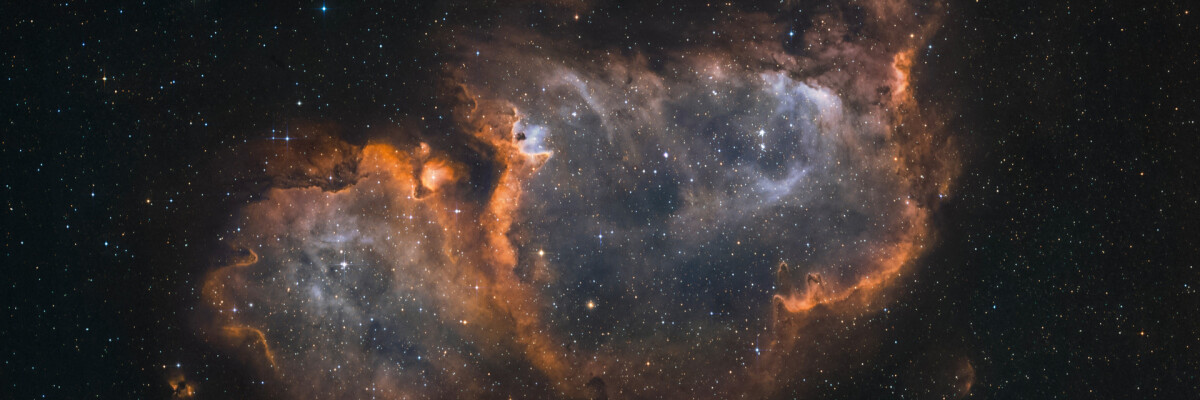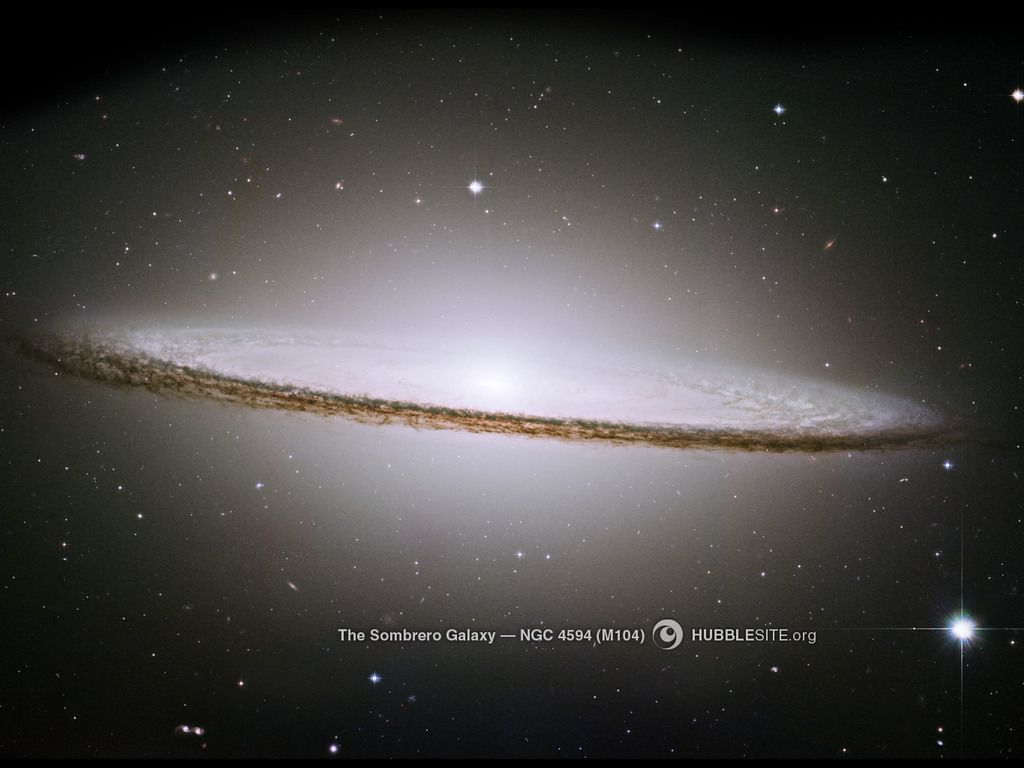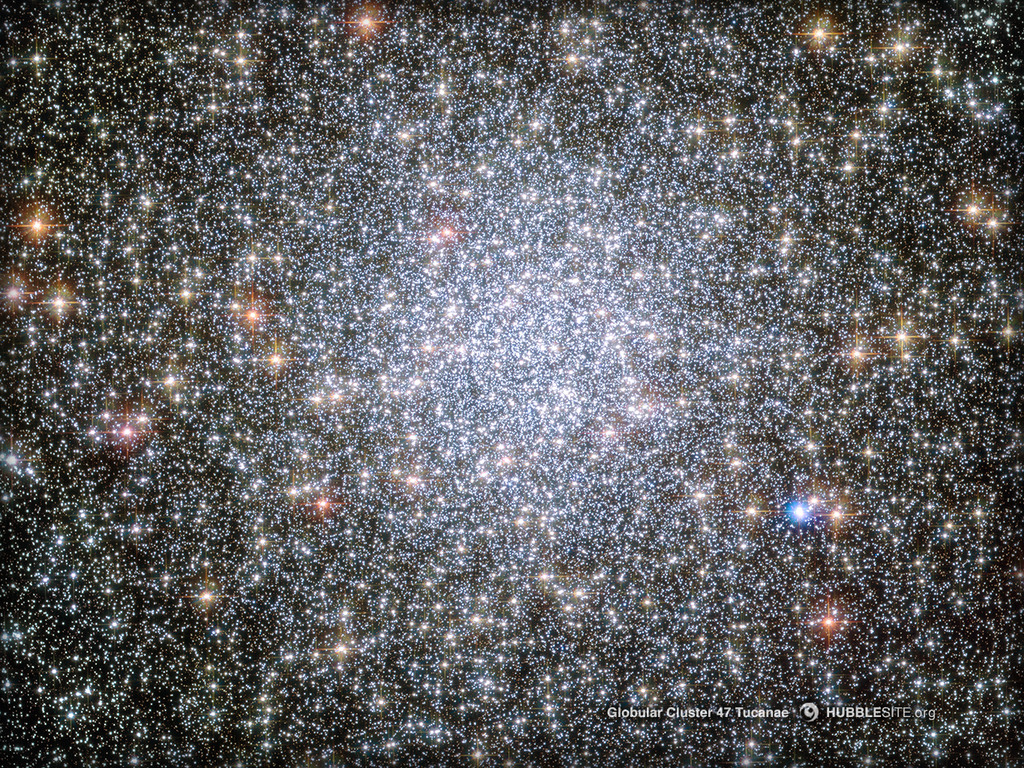Dark matter is one of the greatest mysteries in contemporary science. While there is no direct evidence to its existence, many indirect factors show that not only does dark matter exist, but it actually has a decisive impact on the Universe.
For centuries romantics, dreamers, and truth seekers have directed their gaze to the cosmos and the starry sky and were amazed with its scale and beauty. Living in the 21st century, we like to think that we now know a lot about the evolution of the Universe, unlike our ancestors. We have already managed to invent powerful telescopes and can now observe the cosmos online, build rockets, took man’s first step on the Moon, and take a photo of a black hole. They are all watershed moments. We believe that we know everything. But we are mistaken.
What mankind sees is only 5% of the total Universe. All of the closest planets, which are already known to us, and the myriad of other stars form the constellations which are familiar to us. On a dark, clear night it seems that the sky above us is completely filled and without any free space...
Nevertheless, this is only 5%. Can you imagine what is still beyond our understanding and perception? Since it is not visible to our eyes or our devices we can only assume what is there. According to scientists, the rest of the Universe consists of «material» that can be divided into two components: dark energy (about 75%) and dark matter (about 20%). Curiously, we can not see this «material of the universe» from any angle. It is «dark» not because it is black, but because it still remains a blind spot, only a speculative assumption. No one really knows what it is.
Wikipedia carefully reports the fact that, because it does not emit electromagnetic radiation, «it is difficult, and perhaps even impossible» to observe dark matter directly.
Let’s briefly turn to the history of astronomical discoveries. Where did we learn about the hypothetical existence of matter in the Universe other than what we can see?
Scientists have been actively exploring outer space for quite some time, and it was in the course of such research in the 1930’s that galaxies inside clusters (in particular, inside the famous cluster called Coma Berenices) rotate at a tremendous speed — much more than they should if you rely on assumptions about the total mass of the cluster. Having noticed this discrepancy, scientists made a quite logical conclusion that, probably, the cluster of Coma Berenices is actually much heavier than previously thought. Consequently, there is unexplored area that is present in space, but for some reason remains invisible.
The theory of relativity also made its contribution, which states that mass influences the surrounding space, distorting it and distorting light rays (for example, the well-known principle of a lens). The distortion that is created by galaxies is really huge — and this helps scientists, since it makes it possible to measure the distribution of matter and its mass. By observing the galaxies and applying the conclusions of the theory of relativity to them, the scientists made the second assumption that the mass is always much larger than the area of distortion. This in turn confirms the existence of another unknown material which is not in contact with electromagnetic radiation.
In the 1970’s the study of outer space continued. In particular, scientists investigated the rotational speed of galactic matter located far from the center of the Universe. It was assumed that an object’s rotational speed when moving from the center to the periphery, according to the law of universal gravitation, should proportionally decrease. But the experiments showed a completely different result: even at a distance from the «core» the rotational speed of matter differs only slightly. Based on this, scientists suggested that the density of matter when moving to the periphery still differs insignificantly. However, based on earlier data, the density of visible matter decreased when moving to the periphery. It is logical that this could only happen if the mass of «something else» was added to an existing mass. Subsequently, this mysterious substance was called dark matter.
What is dark matter and how it is associated with gravity?
What does dark matter consist of in various galaxies and why is it so difficult to detect? To date, scientists have already managed to study the baryonic matter in our Universe. As the name suggests, it consists of baryons — that is, neutrons and protons. However, it’s not enough to investigate baryonic matter alone to understand outer space. For example, we know that this matter doesn’t have such strong gravity that can keep our Milky Way galaxy from shattering into pieces. The visible cosmos creates only 10% of the gravitational field. And since the Milky Way rotates at a very high speed, these percentages are too small to keep the planets and stars in their orbits.
The existence of galaxies and superclusters is directly related to dark matter — which doesn’t create electromagnetic radiation, isn’t in contact with them directly, and is invisible to the eyes of researchers. It is only known that the concentrated matter bends the light entering it and must have the following characteristics: to be cold, slow, and heavy — otherwise the matter could not gravitationally «hold» whole galaxies in one place.
It is also known that dark matter exists in two forms: dark matter, which is divided into «hot», «cold», and «warm», and dark energy. Baryonic matter is also present in dark matter, but the rest of the space is occupied by unknown and undiscovered particles that are not in contact with light — this part is called cold dark matter. About 0.3% to 3% are neutrinos — which are particles that move close to the speed of light. This cloud of neutrinos is called hot dark matter. Thus, all cosmic matter can be represented approximately as follows:
- Visible matter — 5%.
- Neutrinos — 0.3% to 3%.
- Baryonic dark matter — 4% to 5%.
- Non-baryonic dark matter — 20% to 25%.
- Dark energy — 70% to 75%.
So, mankind has not yet studied about 90 to 95 percent of the Universe.
The main candidates for the composition of 20% to 25% of the Universe, that are non-baryonic dark matter, are the so-called WIMP (Weakly Interactive Massive Particles) which do not affect ordinary matter in any way. They can not be seen and so it is impossible to assess their impact on the surrounding space. Most likely the mass of these particles is several times larger than the mass of protons, but this guess has not yet been confirmed.
Experiments searching for WIMP particles and all sorts of research in this area have been underway for nearly 30 years, but so far have not yielded any proven results beyond assumptions and speculative hypotheses. Yes, it sounds pretty pessimistic. Nevertheless, attempts to study WIMP particles have not yet been abandoned. Even a small probability that these particles will still interact with ordinary matter under certain conditions is sufficient reason to continue experiments and scientific research. Our planet, rotating around the Sun, regularly passes through a whole «shower» of WIMP particles, that is, they are invisible and are literally everywhere. And that is why for many years scientists have continued to observe the cosmos, suggesting that the «signals» of interaction should change, including the effect on the movement of our planet. After all, at different times in its orbit it passes through this «shower» from different angles, which is why the proposed points of WIMP interaction with a normal proton should also change. More precisely, it does so in theory since the scientists studying non-baryonic dark matter have not yet recorded any tangible results, as we have already said.
According to another version, planets accumulate WIMP particles for a billion years of their own existence which then creates a stream of neutrinos from the planet to the center of the galaxy — in our case, to the Sun. Based on this assumption, several groups of research scientists are also trying to detect excess neutrino emissions, but there are still more questions than answers.
Dark energy
In short, the concept of «dark energy» includes the 70% to 75% of matter in outer space, which like dark matter, still remains a mystery to modern scientists. In cosmology, this is a form of negative-pressure cosmic energy, which can also be related to the term «exotic matter». It includes any substance (usually unknown) that violates one or more classical conditions of the physics of elementary particles. The term was introduced in an attempt to explain the acceleration of the expansion of the Universe — the most amazing discovery of the 20th century. Back in 1929, astrophysics discovered that the Universe was constantly moving and expanding and by 1998 we understood that it was not only expanding, but also gaining speed. Modern scientists believe that the cause of this acceleration is dark energy — an unexplored substance, «the engine and fuel of the Universe», which affects outer space and makes it stretch and grow. Where did 70% to 75% come from? It came from theoretical assumptions. Earlier it was thought that only 30% of outer space consists of baryonic and dark matter. This number was enough for the Universe to be in the form of a disk, that is, to be flat. However, recent observations have shown that space and time curvature takes place in outer space, so 30% of dark matter is not enough — it should be at least 70% of the total composition of the Universe.
In 2016 Adam Riess, an American astrophysicist who won the Nobel Prize in 2011 for the «Discovery of Accelerated Expansion of the Universe by Observing Distant Supernovae», together with his colleagues, managed to find the rate of expansion of the Universe. During their experiments it was found that there are discrepancies in the data on the speed with which two galaxies move from each other, located at a distance of 3 million light years. Adam Riess calculated the number at 73 km/s. While studies of the past, based on horoscopes and cartography of stellar bodies, recorded this figure at 69 km/s. The discrepancy in numbers forced scientists to put forward two assumptions: either the measurements of cosmologists and telescopes were wrong or dark energy in some way (of course, exactly how is unknown) influenced the Universe and changing the rate of its expansion as a result.
To confirm or refute their hypotheses scientists carried out their research with more expensive and accurate equipment. They eventually reached the figure of 73.56 km/s, which leads them to believe that the expansion rates of the «modern» and «ancient» Universe differ significantly. Adam Riess notes that the probability of error is 0.01% — so it is safe to assume that the Universe is not only expanding, but continues to gain speed.
We still do not know exactly why this happens and what the composition of dark energy is, but there are three versions.
- The simplest defines it as a cosmological constant that remains unchanged and fills the entire space of the cosmos. As a constant, it is present in unchanged form in any single mass. Another name is vacuum energy, it is sometimes called «lambda», using the term to refer to dark energy in general relativity.
- The second theory is completely opposite. It states that dark matter is the quintessence of the cosmos which is constantly changing in space and time. This alternative description of dark energy was advanced at the end of the 20th century by astrophysicist Christof Wetterich. According to this theory, the Universe expands slightly slower than in the framework of the cosmological constant theory above.
- Finally, the third theory is for skeptics — dark energy does not actually exist; it is just the unexplored properties of gravity which simply acts a little differently at such a far distance.
Neither the first, the second, or the third version have been unproven yet. Nevertheless, all the data on the composition of the Universe that we have in 2019 does not contradict the first concept, as far as we know. Therefore, scientists consider to be the primary theory. We need well-designed experiments and substantial evidence that is not yet available so that astrophysicists can finally and definitively choose one of the three versions,.
Interestingly, the early data from studies of the Universe suggested that it does not accelerate. On the contrary, they show it is slowing down. The error in determining the properties of the motion of the Universe was associated with the idea that the invisible part of outer space consists solely of dark matter. So the discovery of dark energy, one could say, mixed up all of the astrophysicists cards. The existence of dark energy, whatever its composition, answers the question of what the invisible mass that fills outer space, the same way that the Big Bang nucleosynthesis theory explains the presence of light elements (helium, deuterium, and lithium) in new galaxies, and the large-scale structure of the universe theory explains the appearance of stars, quasars, and galaxy clusters.
What’s next?
According to scientists, the accelerated expansion of the universe began about 5 billion years ago. Earlier, the acceleration was slower due to the effects of dark and baryonic matter. But now, in an expanding Universe, the density of baryonic matter decreases several times faster than the density of dark matter. That is, if the mass of the Universe is doubled, the density of baryonic matter will proportionally decrease by 2 times while the density of dark matter will remain almost unchanged. Ultimately, this will lead to the predominance of dark matter and will have a direct influence on the Universe with unknown effects.
In addition, some galaxies might go beyond our superclusters. That is, become completely invisible due to the fact that they exceed the speed of light. Although the relative speed of galaxies is quite difficult to calculate, of course, given the present curvature of space and time. Scientists have not studied the accuracy of their calculations yet.
Some time in the future our supercluster will enter a state of thermal death. This was predicted within the framework of the theory about the predominance of dark matter in the existing model of the Universe. There is another, even more interesting theory. It states that after an indefinite amount of time, the Universe will simply «shred» and the expanding action of dark energy will become so strong that it will destroy any gravitational bonds between objects and eventually break atomic bonds. Where will this lead us? To the Big Rip — a concept that implies the death of the Universe. The reverse of this possible hypothesis is the Big Crunch which will occur due to the dissipation or change in the properties of dark energy. This will ultimately lead to the next Big Bang. This theory is widely accepted and supported by adherents of the cyclical nature of history, which includes the history of the universe.
News from physicists
Recently, scientists at Oxford University suggested that dark matter and dark energy in the Universe are, in simple words, two components of a single whole which they call a fluid with negative mass. This idea, like all of the others is only at the theoretical level. However, it could prove the symmetry of the cosmos in positive and negative qualities. It suggests that there is a certain balance of the Universe. It is true that scientists basically ruled out the very existence of negative dark matter in the past. This would suggest that as the Universe expands faster the negative masses become less dense, while the existing space behaves exactly the opposite. However, scientists at Oxford University under the leadership of Jamie Farnes believe that the increase in negative mass does not affect the concentration of the liquid — it is not diluted and therefore does not lose its properties. Despite the serious its unrealistic nature it has still managed to take its place in the family of theories.
***
Despite unsuccessful experiments, scientists still continue to fight (and are unlikely to stop doing so in the near future) over solving the most important mystery of cosmology, astronomy, and theoretical physics — the existence of dark matter and dark energy which occupies most of outer space. There are many different theories about their properties, composition, and influence. From widely accepted in scientific circles, to the craziest. But none of them can be completely correct or incorrect at this stage in the development of human knowledge and technology. Whether we like it or not, in reality we still know very little about what surrounds us outside of our home planet. All that scientists have is various hypotheses and approximate guidelines to base their research on. But they may be proven completely wrong in the future. Or help make a breakthrough on a truly universal scale.
Share this with your friends!











Be the first to comment
Please log in to comment